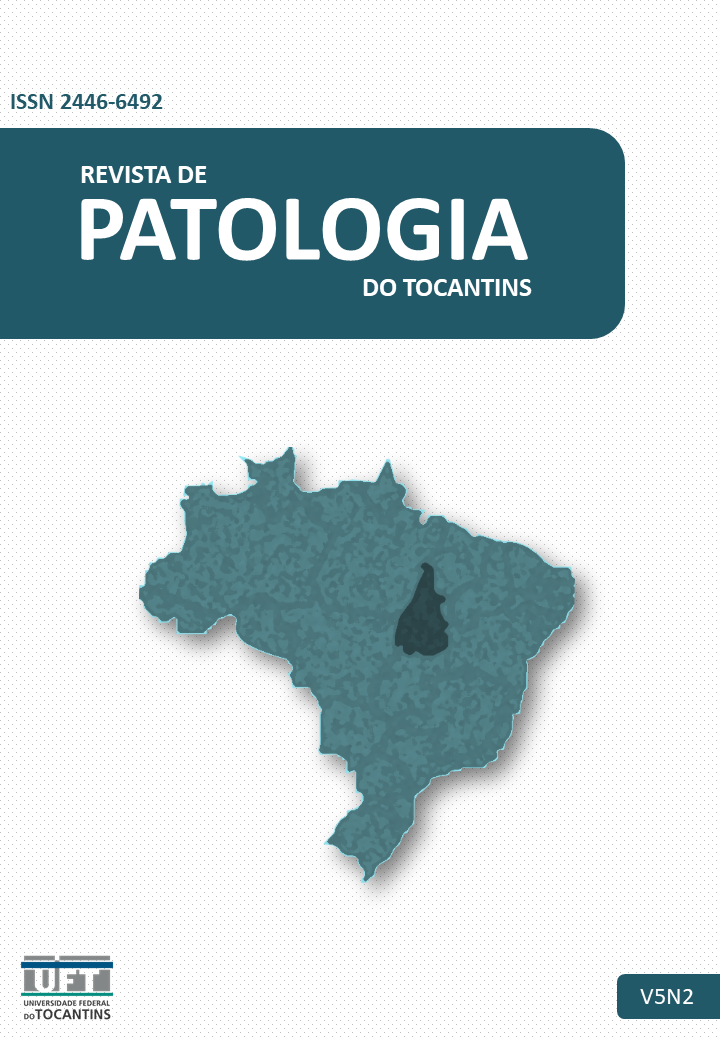EPIDEMIOLOGIA MOLECULAR DA INFECÇÃO PELO PAPILOMAVÍRUS HUMANO (HPV) E CÂNCER CERVICAL NO BRASIL: REVISÃO INTEGRATIVA
DOI:
https://doi.org/10.20873/uft.2446-6492.2018v5n2p79-83Resumo
RESUMO
Introdução: O HPV é classificado como de baixo ou alto risco oncogênico. Os tipos de baixo risco estão associados ao surgimento de lesões benignas como verrugas, e os de alto risco estão associados ao processo de carcinogênese, sendo os tipos HPV 16 e 18, relacionados a mais de 70% dos casos de câncer cervical Objetivos: Identificar a epidemiologia molecular dos tipos de HPV em mulheres com alterações na citologia oncótica por meio de uma revisão integrativa. Métodos: Essa revisão integrativa foi conduzida de acordo com o International Preferred Reporting Items for Systematic Reviews and Meta-Analyses (PRISMA) guidelines. Pesquisas eletrônicas foram realizadas usando PubMed, LILACS e SciELO em novembro de 2017. Para alcançar o máximo de sensibilidade na estratégia de busca, usamos os descritores “HPV”, “cervical cancer” e “Brasil”, obtido da MeSH (Medical Subject Headings). Resultados: Foi encontrado um total de 215 estudos potencialmente elegíveis para a revisão, 23 estudos em duplicata foram removidos. Inicialmente, revisor X e Y avaliaram títulos e resumos dessas publicações, e 155 referências foram excluídas. Após seleção através dos resumos foram selecionados 37 estudos para leitura na íntegra pelos dois revisores independentes. Ao final das etapas de seleção foram incluídos 13 estudos na síntese de revisão integrativa Conclusão: Nessa revisão, observou-se que o tipo de HPV mais frequente foi o HPV 16. Dessa forma, é necessário o estabelecimento da real situação dos tipos de HPV que predominam na população brasileira, possibilitando uma melhor compreensão epidemiológica, além do desenvolvimento de adequadas medidas preventivas.
Palavras-chave: Papilomavírus Humano (HPV). Epidemiologia molecular. Câncer cervical.
ABSTRACT
Background: HPV is classified as low or high oncogenic risk. Low-risk types are associated with benign lesions such as warts, and high-risk types are associated with the carcinogenic process, with HPV types 16 and 18 being related to more than 70% of cervical cancer cases. Objectives: Identify the molecular epidemiology of HPV types in women with changes in oncocyte cytology through an integrative review. Methods: This integrative review was conducted according to the International Preferred Reporting Items for Systematic Reviews and Meta-Analyzes (PRISMA) guidelines. In order to achieve maximum sensitivity in the search strategy, we used the descriptors "HPV", "cervical cancer" and "Brazil", obtained from MeSH (Medical Subject Headings). Results: A total of 215 potentially eligible studies were found for review, 23 duplicate studies were removed. Initially, reviewer X and Y evaluated titles and abstracts of those publications, and 155 references were excluded. After selection through the abstracts, 37 studies were selected for reading in full by the two independent reviewers. At the end of the selection stages, 13 studies were included in the synthesis of integrative review. Conclusion: In this review, it was observed that HPV 16 was the most frequent type of HPV. Thus, it is necessary to establish the real situation of HPV types that predominate in the Brazilian population, making possible a better epidemiological understanding, besides the development of adequate preventive measures.
Keywords: Human papillomavirus (HPV). Molecular epidemiology. Cervical cancer.
Downloads
Publicado
Como Citar
Edição
Seção
Licença
Os autores declaram para os devidos fins de direito e obrigações, sob as penas previstas na Legislação vigente, que são autores/detentores dos Direitos Autorais do trabalho proposto nos termos dos artigos 28 a 33 da Lei Federal nº9.610 de 19 de fevereiro de 1998 (Lei dos Direitos Autorais).








